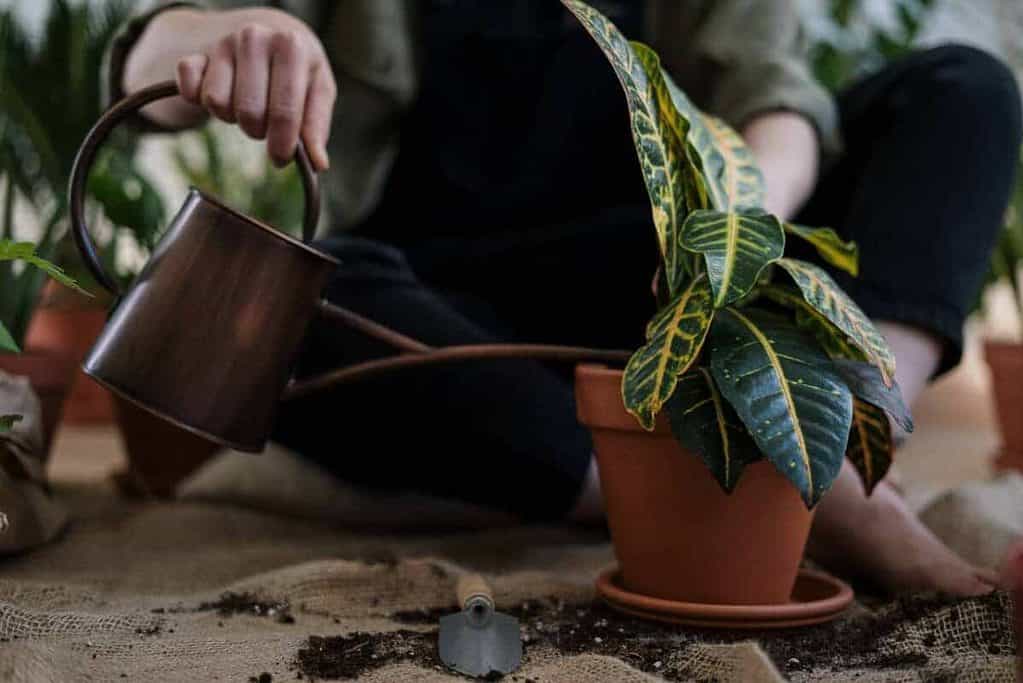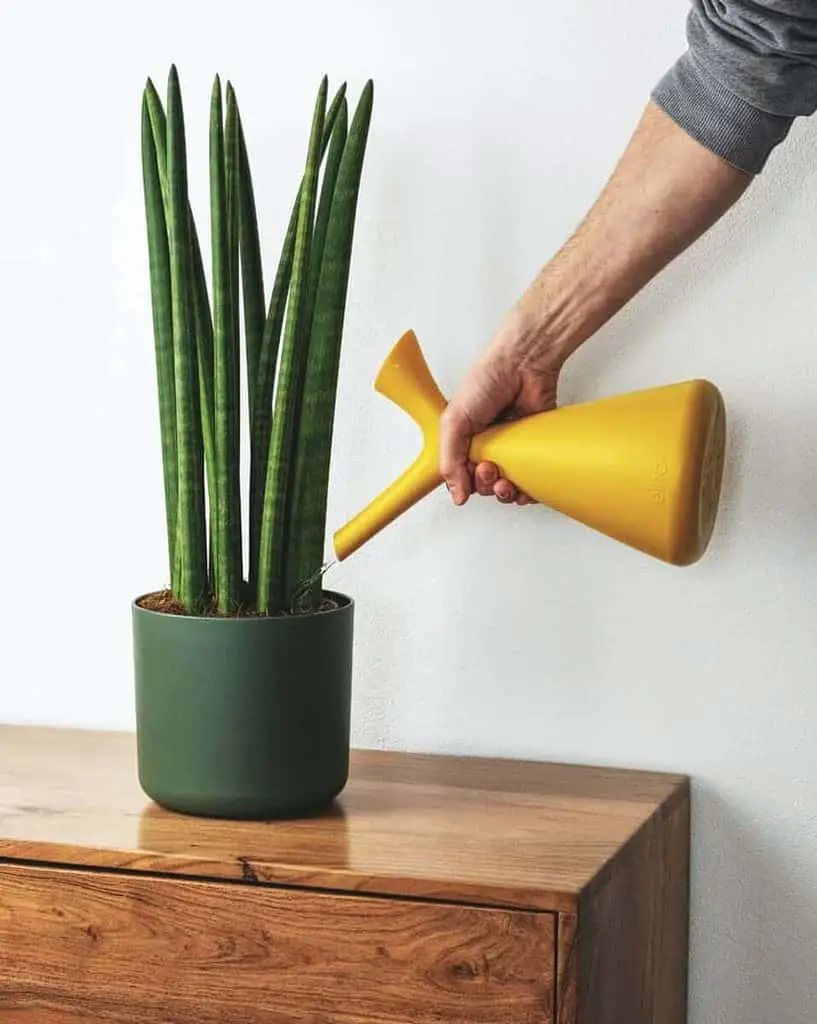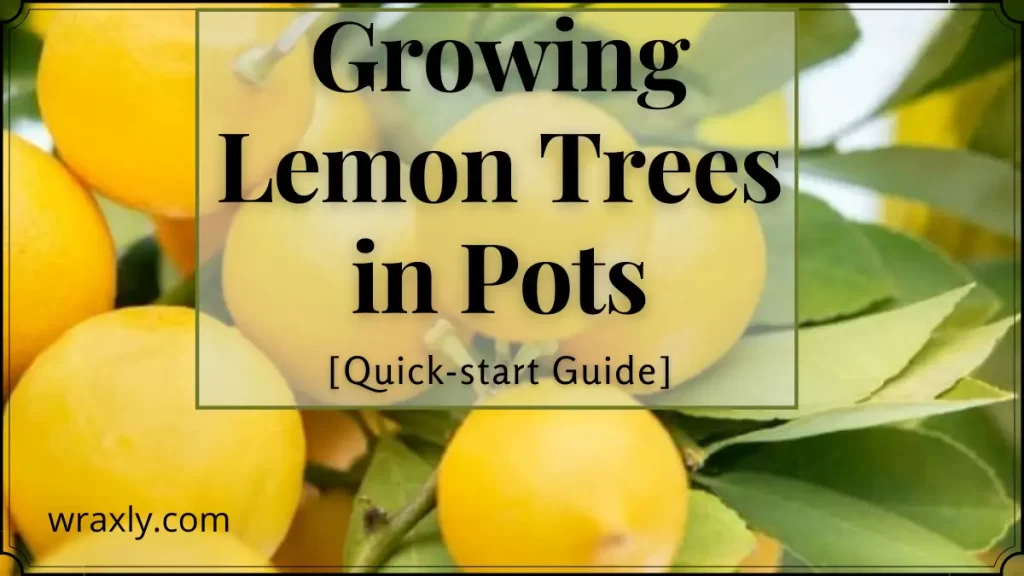Even those who don’t garden know that plants need regular watering to survive. While this is common knowledge, figuring out when and how to water plants is a bit more complex. Considering that the way you water your plants plays a key role in their survival, it’s best not to leave your method up to chance. Instead, let this article serve as your guide on how to water indoor plants.
![How to Water Indoor Plants [Plant Care 101]](https://wraxly.com/wp-content/uploads/2021/03/How-to-Water-Indoor-Plants-Plant-Care-101.jpg)
Table of contents
Find a Great Container
Before bringing a plant into your home, you should have a container ready for it. The container you choose should meet a few basic needs:
- Size: The container must be large enough to accommodate the root system of your plant.
- Appearance: Choose a container that is appealing to you and fits with your indoor décor.
- Materials: The container materials influence the look and performance of the container.
A quality container scores well in each of those categories. But what some novice gardeners do not know is that the container you choose can play a role in your watering.
Containers for Indoor Plants Need Drainage
As they relate to watering, a container’s capacity for drainage is of critical importance. The reason for this is simple. Most plants are not able to survive in standing water. If your container does not have a hole at the bottom or is not made with a permeable material, there is no way for water to escape.
There are a few plants that can tolerate wet soils. But even among plants that enjoy frequent watering, many species will fail to thrive in a container with no drainage.
While size, appearance, and materials are important considerations, drainage is the most essential quality in an excellent indoor plant container . Once you have found a container with good drainage, you are ready to add plants to your home and begin learning how to water them.
Determine the Right Watering Schedule
After bringing a new container plant into one of your indoor living areas, you face the on-going task of keeping it alive. As you likely know, one of the most vital maintenance tasks for any plant is watering.

Yet while watering is a fundamental aspect of plant care, it is surprisingly difficult to set firm guidelines as to how often you should perform this chore. Instead, your watering frequency will depend on the specific plants you grow and their individual moisture needs.
Still, there are a few guidelines that a beginner gardener can follow when watering indoor plants. The sections below will help you get started.
Set a Routine
When it comes to watering and other plant care tasks, it is best to set a general routine. Forming a routine will also make plant care a habit for you. That way, you stand less of a chance of neglecting your plants.
As you might expect, the frequency of your watering should depend on the growth requirements of each plant. Once you decide that frequency, begin following a consistent watering schedule.
If you like, you can create a more comprehensive schedule that includes other aspects of plant care, such as pruning. You can even try batching your gardening tasks into a single part of the day, as that is often a time-efficient approach. But at the very least, you should have a standard time of day, week, or month that you water certain plants.
How Often to Water Indoor Plants
When you purchase a plant, it will often come with a tag that has information about how to care for it. You should not only read that tag, but you should also save it.
Many gardeners leave these tags attached to their plant containers. Others store them nearby. Either way, the plant care tag is a good resource. By saving them, you won’t need to rely on your memory to keep your plants healthy.
It is also a good idea to do some additional research about what your plant needs. A quick online search can show you a lot of valuable information about how to care for the species of plants you are trying to grow.
Not Too Much, Not Too Little
It is no shock to learn that a plant will die without water. What is equally true is that too much water is a problem as well. This dilemma points to the importance of balance in your watering habits.
Underwatering and overwatering are two of the most common reasons why plants fail. To avoid those opposite errors, you should pay close attention to how your plants respond to your watering.
Knowing the general needs of your plant is not always enough. Often, it is not until you observe the foliage and the soil moisture of your potted plant that you understand how much water it truly needs.
You may struggle at first to recognize the signs of overwatering and underwatering. With time, you will begin to get a feel for when your plants need more or less water. A soil moisture meter is a helpful tool for figuring out your plant’s watering needs.
Indoor Plant Watering Technique
Determining a schedule for your watering may be the most challenging part of learning how to water indoor plants. But the way you water them matters as well. In the sections below, you can learn a few tips that will help your watering technique.

Avoid Watering Leaves
When you water your indoor plants, you should not pour the water on the foliage. There are some common gardening myths that attempt to explain why this is a bad idea. But there is one explanation that carries more weight than any other.
When the leaves of your plant are too wet, they can become the ideal breeding ground for fungal infections. If such an infection arises, it may cause your plant’s health to decline. Also, there is not much benefit to watering foliage regularly. The roots, rather than the leaves, are where the plant will absorb its moisture.
However, there are some exceptions in which it is a good idea to water a plant’s leaves. If you have experienced an intense heatwave, some water can help to cool excessively high leaf temperatures. Yet, that leaf watering is more relevant to outdoor plants.
Regarding indoor plants, you may want to mist the leaves of plants that enjoy a tropical climate. In that case, misting can help to mimic the humidity that your plant wants. Otherwise, focus on wetting the soil, not the leaves.
Soak the Soil
Now that you know what parts of the plant not to water, it’s time to learn what you should do. During a typical watering, you should soak the entirety of the soil in your plant container.
Rather than pouring water on one area, you should wet the surface of the soil equally. Provide enough water so that the soil below the top layer becomes moist too.
You should also consider providing your container plants a layer of organic mulch. While you won’t need to worry about weed suppression as much in an indoor garden, mulch is still a great way to retain soil moisture after watering.
Manage Excess Water
We have already noted the importance of drainage in your plant container. That drainage is one of the ways that you can ensure that your plant is not getting too much water.
The drainage of your container serves as a clear indication of when you have soaked the soil sufficiently. When you begin to see water running through the bottom of the container, you know that the entirety of the soil is moist.
Drainage is the main way to ensure that there is no excess water in your container. But there is another method you can use as well. If you think you have overwatered your plant and you see water sitting on the surface of the soil, you can simply pour that water from the container.
Getting a Feel for Watering
So far, you have gained some practical knowledge related to the proper way to water indoor plants. As you will see during your continued watering, that theoretical knowledge does not always outweigh your experience.
As you become a more seasoned indoor gardener, you will develop a better sense of when you have overwatered or underwatered one of your plants. To help speed the process of gaining that know-how, here are a few insider tips related to watering plants.
Recommended Moisture Meters
| Image | Title | Prime | Buy |
|---|---|---|---|
 Top
Top | 2 Packs Soil Moisture Meter, No Battery Required (Black & Green) | PrimeEligible | Check Price on Amazon |
Top Top
Top | Soil pH Meter 3-in-1 Soil Tester Moisture, Light, pH, Meter Tool for Garden | PrimeEligible | Check Price on Amazon |
 Top
Top | Luxekem Soil Moisture Meter. 4 in 1 Soil Test Kit for House Plants, with 20 Labels | PrimeEligible | Check Price on Amazon |
 Top
Top | HOTWAV Soil Moisture Meter, 3-in-1 Soil Test Kit with Moisture/Light/pH Meter (2 Packs) | PrimeEligible | Check Price on Amazon |
 Top
Top | Soil Moisture Meter-2 Packs Soil Test Kit for Garden-No Battery Needed | PrimeEligible | Check Price on Amazon |
 Top
Top | 5-in-1 Soil pH Meter, with Environmental and Soil Moisture, Temperature, Light and PH Testing Functions | PrimeEligible | Check Price on Amazon |
 Top
Top | XLUX Soil Moisture Meter, No Batteries Required, 2 Pack | PrimeEligible | Check Price on Amazon |
Feel the Soil
If you are struggling to get a feel for when your plants need water, then feeling may quite literally be your solution. Often, the best way to know if a plant is thirsty is to place your fingers on the surface of the soil
If the soil is dry, give it some water. If it feels moist, your plant may not need water, even if your schedule suggests it does.
Other Factors that Affect Watering
Following a predetermined schedule can be effective. But it is rarely as effective as treating watering as an on-going point of reevaluation. Beyond the moisture needs of a plant species, there are some other environmental factors that can affect your watering schedule, especially in an indoor setting:
- Air temperature
- Humidity
- Current weather patterns
- Variations in sun exposure
- Proximity to HVAC like radiators and vents
The influences and more can cause your plants to need more or less water than you might expect. So, as you water your plants, follow the general guidance we have described above. Then supplement that approach with an understanding of your plants and the environment in which you grow them. Then you can have confidence that you know how to water indoor plants.

John Haryasz is a freelance writer and landscape designer. In the field of landscape architecture, he has contributed to many successful design projects throughout the country. As a writer, John specializes in creating captivating and informative web content. Through that work, he aims to share his design knowledge and promote engagement with the outdoor world.


![Growing Plants from Cuttings [A Simple Guide]](https://wraxly.com/wp-content/uploads/2021/03/Growing-Plants-from-Cuttings-A-Simple-Guide-1200-1024x576.webp)
